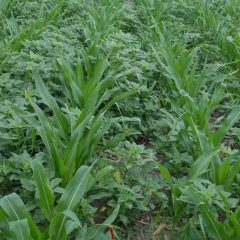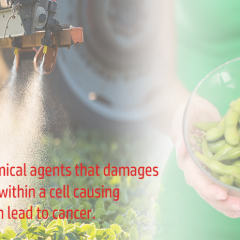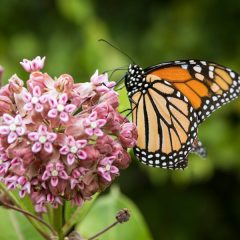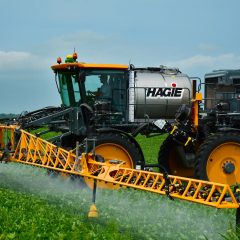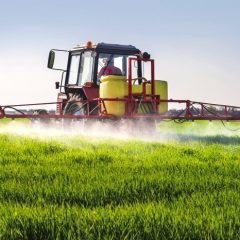Search results for “Roundup”:
DTN staff reporter Emily Unglesbee has ably covered the dicamba-drift crisis over the past couple of years. Her latest is a detailed, three-part series on Palmer amaranth, “possibly the most aggressive weed American farmers have ever faced” (Unglesbee, 2019a). Palmer amaranth is so scary because of its “spectacular reproductive abilities” and it’s extreme adaptability. This […]
Read More, References, Comment »
Phosphorous is a key nutrient promoting plant growth, and a standard ingredient in many fertilizer blends. But if too much phosphorous ends up in the region’s watershed, it can wreck havoc on wetlands, streams, and lakes, causing harmful algae blooms (like the extreme cyanobacteria algae blooms in Lake Erie last year) and depletion of dissolved […]
Read More, References, Comment »
IARC vs. EPA Genotoxicity Paper “How did the U.S. EPA and IARC reach diametrically opposed conclusions on the genotoxicity of glyphosate-based herbicides?“, Environmental Sciences Europe, January 15, 2019, DOI: 10.1186/s12302-018-0184-7. By: Charles Benbrook, PhD Access paper (free) Access Supplemental Tables Access Editorial Statement “Some food for thought – A short comment on Charles Benbrook’s paper […]
My analysis comparing the evaluation of glyphosate, and glyphosate-based herbicide (GBH) genotoxicity by two key agencies — the U.S. EPA and IARC — was published January 15, 2019 in the peer-reviewed journal Environmental Sciences Europe. The full text of the open-access paper “How did the US EPA and IARC reach diametrically opposed conclusions on the […]
Read More, References, Comment »
Introduction Three Major Actions The Food Quality Protection Act (FQPA) Glyphosate/Roundup Case Study The Lowdown on Roundup Changes Over Time Does Glyphosate/Roundup Cause Cancer IARC vs. EPA Genotoxicity Paper Introduction Pesticide regulators strive to prevent “unreasonable adverse effects on man and the environment,” the basic standard embedded in the FIFRA statute (the Federal Insecticide, Fungicide, […]
Troubling and significant declines in monarch butterfly populations in Florida have occured over the last 30+years, according to a research team from the McGuire Center for Lepidoptera and Biodiversity, part of the Florida Museum of Natural History. A paper by the FLA team was published this summer in the Journal of Natural History, and reports […]
Read More, References, Comment »
Over-the-top dicamba use on Roundup Ready Xtend soybeans and cotton will be allowed by EPA for up to two more years, with some additional use restrictions. This means farmers will be able to continue using the controversial new dicamba formulations XtendiMax, FeXapan, and Engenia that have damaged millions of acres of cropland, gardens, and other […]
Read More, References, Comment »
There is a new epidemiology paper in JAMA Internal Medicine by a team of French government scientists that reports a 25% decrease in overall cancer risk from relatively high levels of organic food consumption, compared to little or no consumption, among a large cohort (just under 69,000 individuals, with 1,340 incident cancer cases four years post study […]
Read More, References, Comment »
Does the excerpt below from the September 10th issue of Politico’s Morning Agriculture e-newsletter sound familiar? It echoes sentiments on Hygeia in an “Endnote” to our August 20, 2018 post on the Lee Johnson verdict and award, which states — Endnote: The first half of August 2018 will go down in the history of pesticide use and regulation […]
Read More, References, Comment »
Answer — What to do about dicamba? Larry Steckel is a widely respected extension weed scientist who has worked for 30+ years for the University of Tennessee. He welcomed and enjoyed the wondrous years, 1996 through about 2004, when one or two applications of Roundup worked flawlessly on almost all corn, soybean, and cotton farms. […]
Read More, References, Comment »

